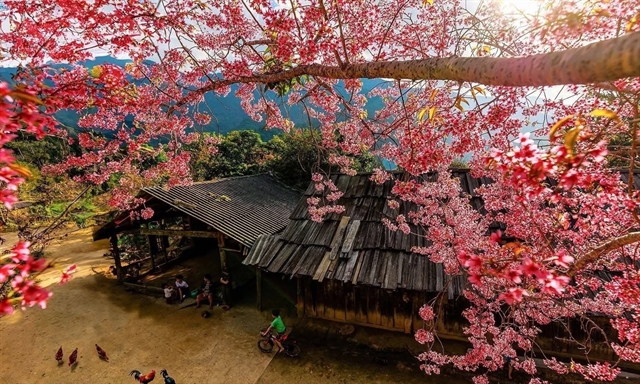 Travel
Travel

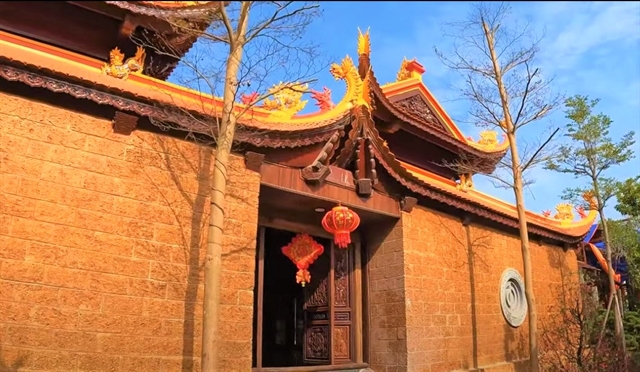
|
| Thắng Nghiêm Pagoda is beautifully designed with yellow, brown, and red colors. — VNS Photo Thanh Nga |
Thanh Nga
I noticed Thắng Nghiêm Pagoda from my apartment in Hà Nội and decided to give it a visit.
The pagoda is beautifully designed with yellow, brown, and red colours adorning it. It's located in Khúc Thủy Village in Thanh Oai District of Hà Nội, about 15km away from the city centre. The locals refer to it as Khúc Thủy Pagoda.
On a summer morning, I arrived at the village, which sits on the banks of the Nhuệ River and has a history spanning over a thousand years. The village has seen many changes in the southern gateway of the capital, with time covering the roofs of alleys, walls, and tree stumps. Despite this, the village retains a peaceful and nostalgic atmosphere.

|
| Thắng Nghiêm Pagoda is about 15km away from the city centre. — Photo Facebook of Thắng Nghiêm Pagoda |
Thắng Nghiêm Pagoda is easy to spot in the village. It's large, beautiful, and colourful. It's a familiar place for followers of the Tantric sect of Buddhism.
According to history, it was built during the reign of the emperor Lý Thái Tổ in 1010 and served as the place of worship for many famous monks and generals of the Lý Dynasty (1009-1225) and Trần Dynasty (1225-1400), such as Khuông Việt Quốc Sư, Vạn Hạnh Quốc Sư, Trùng Liên Bảo Tích Quốc sư, Đạo Huyền Quốc sư, Huyền Thông Quốc Sư, and Hưng Đạo Đại Vương.
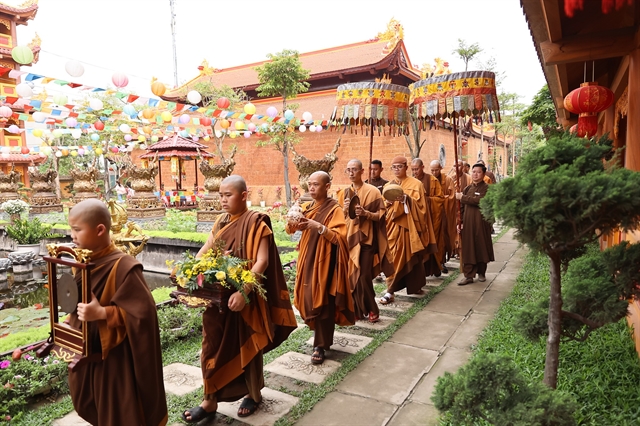
|
| Thắng Nghiêm Pagoda is a familiar place for Buddhist followers of the Tantric sect. — Photo Facebook of Thắng Nghiêm Pagoda |
The temple complex has been built almost entirely on the old temple foundations. The pagoda has been known by different names throughout history, including the King Pagoda, Pháp Vương Pagoda, and Bà Chúa Hến Pagoda in the Đinh Dynasty.
Upon arriving at the pagoda, I immediately felt a sense of peace and tranquillity. The surrounding area was quiet and seemed to invite contemplation and reflection. As I entered the yard, I was struck by the beauty of the temple garden.
The statue of Bodhisattva Avalokitesvara exuded a peaceful aura, while the two rows of statues that flanked it consisted of 100 yellow Buddhas, each representing the Buddha Shakyamuni and imparting wisdom and virtue.
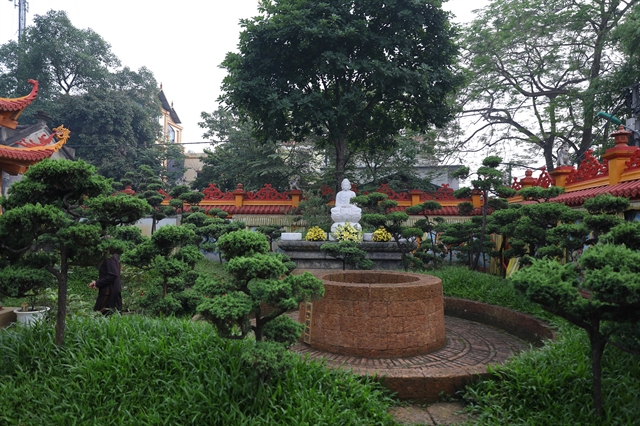
|
| An ancient well in Thắng Nghiêm Pagoda. — Photo Facebook of Thắng Nghiêm Pagoda |
As I ventured deeper into the temple grounds, I came across Tam Bảo, which houses Buddha statues representing different philosophies of the religion. This is an important space of worship in Vietnamese temples, and most Buddhists who visit the temple will burn incense and pray at this location. There's also an ancestral house and tombs surrounded by pillars of samsara.

|
| The tombs in Thắng Nghiêm Pagoda. — VNS Photo Thanh Nga |
Behind the Tam Bảo House is a large hall used for teaching Buddhist scriptures and holding major ceremonies, such as Lễ Phật Đản (the Buddha's Birthday) and Vu Lan Festival, also known as the filial piety ceremony.
I explored the deep halls and discovered the mysteries of the Vietnamese tantric practice. Bronze statues were carefully crafted by artisans from Hàng Đồng Street in Hà Nội.
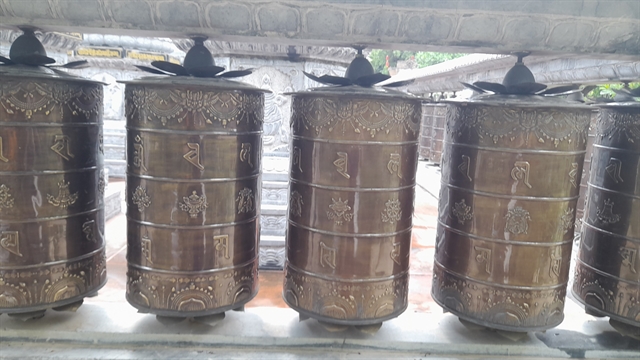
|
| Pillars of samsara surround the tombs. — VNS Photo Thanh Nga |
I got lost in the beauty of the garden behind the Tam Bảo House. The fragrant scent of incense, the sound of ringing bells, and chanting lulled me into a dream-like state.
Over time, the temple has been restored to make it more spacious and beautiful.
While at the pagoda, I met Nguyễn Thu Thủy, who lives in Thanh Oai District of Hà Nội. She shared that it was her first time visiting the pagoda, but she was very impressed by its beauty and cleanliness, as well as the intricate carvings and Buddha statues.
“The dignified atmosphere gives me a sense of holiness,” Thủy said.
Thủy also noted that if one is seeking a calm and peaceful environment for meditation and reflection, this pagoda provides an ideal setting. — VNS
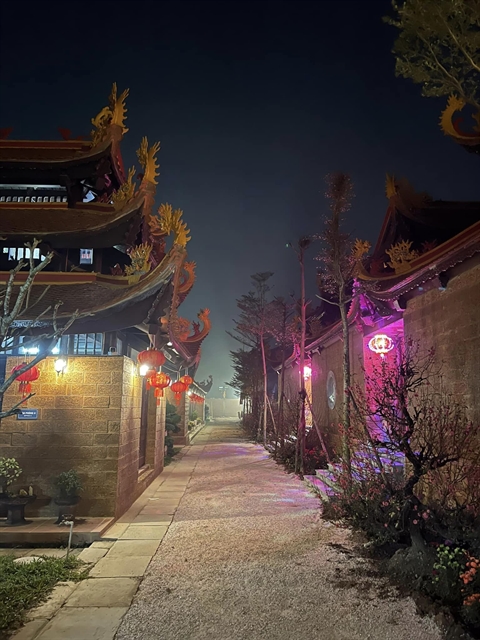
|
| Thắng Nghiêm is an ideal setting for meditation and reflection. — Photo Facebook of Thắng Nghiêm Pagoda |